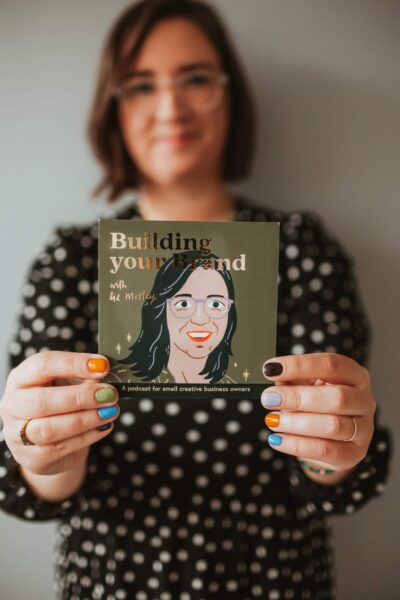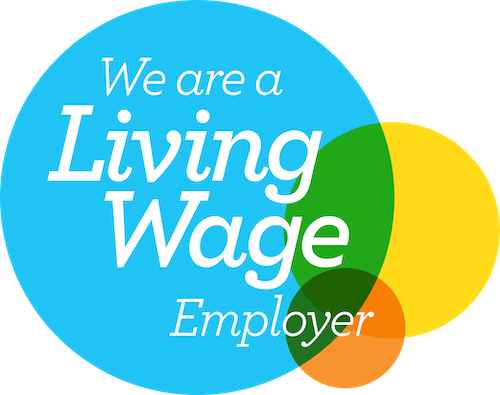Back in July, we had two lovely work experience students join us for a week each, to learn all about what it’s like to work in a website design studio.
As Studio Cotton’s content producer, my task was to teach them all about writing for small businesses, specifically blogging and its impact on SEO (search engine optimisation).
A lot of my job involves writing blog posts for Studio Cotton (like this one you’re reading right now – whoa) as well as crafting blog posts and product descriptions for our SEO content clients.
My role also includes things like website content edits, email marketing, social media posts, and being chief vibes consultant – a made-up role which mainly involves Studio Cotton founder Aime sending me links to things she wants to buy for the office in order for me to enable her, as well as giving her constant praise.
Anyway, this blog post is not about vibes (hopefully I’ll be asked to write that one another time), this blog post is about what I teach our work experience students about writing for a small business.
1. Let’s start at the very beginning – what is long form content?
Although our work experience students have grown up with the internet (unlike us millennials), my guess is they spend more time scrolling TikTok than reading blogs, so I start with teaching the basics: what the heck is long form content, and why is Studio Cotton so obsessed with it?
Well, short form content is a bitesize chunk of info such as a social media post, a mini blog, an email, or a video under 3 min.
Long form content includes full-size blog posts, case studies, reviews, video essays, podcast episodes, and product descriptions. It’s longer.
Most of the long form content we create at Studio Cotton is in the shape of blog posts, including listicles, Q&As with other small business owners, informative/knowledge pieces, and opinion pieces.
You’ll notice most of our blog posts are listicles, because they’re easy to write (especially when I’m working from Aime’s or a client’s notes) and easy for you guys to read. For more on that, check out 6 reasons to write listicles; the easiest blogs for your small business.
2. Why blogging is important for a small business website
If you’ve followed Studio Cotton for a while, or even seen a single blog or Instagram post of ours, you’ve probably heard (read) us banging on about writing more words on your website.
There are two reasons really – you need to effectively convey what your small business is all about to potential customers, and also to search engines like Google. That’s SEO, baby!
There are all sorts of ways to boost SEO, many of which are built into a website from the get-go (especially the websites we build 😉 ) but blogging can give it a lil boost by:
- Showing Google that your website is regularly updated
- Increasing the number of keywords which tell Google what your website is about
- Increasing time visitors spend on website
- Creating timely and seasonal content
- Having outbound (and potentially inbound) links, which gives Google more context about your website. To learn more about backlinks, read 7 simple and free SEO backlink building tips using only your existing contacts and relationships.
Aside from those lovely SEO benefits, blogging is great because sharing your knowledge builds authority, as people will view your business as trustworthy, and view you as an expert.
It also helps to build brand affinity, which is the relationship between a customer/client and a business. It’s built on whether they feel like they can relate; whether they feel like a brand is for them.
Plus plus pluuuuuusssss, it gives you something to share on social media, and you can link your social media to your website (extra inbound link for ya).
SEO friendly blog content that Google loves
We can turn your expertise and opinions into juicy, SEO-rich content for your website.

3. Discovering a small business’ tone of voice
Every business has its own distinctive tone of voice (TOV), from very formal, to more laid-back and friendly – like us 🙂 – it’s pretty important for that brand affinity I just mentioned.
If you’re a one-person business, it’s likely you’ve been writing everything in your own voice and haven’t given this much thought, and that’s a-ok. But now may be the time to write down a few brand guidelines, especially if you’re considering working with a copywriter or content producer.
At Studio Cotton, we learn a small business’ tone of voice by either reading a brand messaging document which explains it thoroughly (it’s ideal when a small business already has one, as that does a research job for us), or by looking through the content they already have on their website, social media, emails, etc.
When we get a new SEO Content client, we make a Core Document which, amongst other things, includes a general vibe (eg. friendly, whimsical, silly, soulful, etc) and examples of words and phrases they already use in their website and social media messaging.
We also schedule in a meeting/call with a client, as hearing their thoughts and ideas in their own words helps to build a better idea of their tone of voice.
Tone of voice is super duper important when writing for a small business, because a blog post needs to seamlessly fit in with the rest of their website content.
4. How to write and structure a blog post
Like all good stories, a blog post needs a beginning, a middle and an end.
The introduction (the “beginning”) should include a little bit about who you are, and what the reader can expect from the blog post.
The middle depends on your subject matter, we’ll get to that in a sec…
And the conclusion (the “end”) should wrap the blog post up nicely – it can mirror the introduction, and I like to include a link or two to some related helpful blog posts, to entice visitors to stay on our website a lil longer.
Not sure what to write? Have a think about frequently asked questions you could expand on, any how-tos you could share, or interesting business-related opinions you might have.
Normally, I write loose notes for a blog post with the points I need to hit, and then flesh it out. But maybe you like to write a wall of text and then break it up – neither way is wrong. Just get those lovely words out.
Ideally you want a blog post to be 950 words or longer. But don’t just waffle on to increase word count – here are 7 tips & tricks for writing longer blogs.
Writing like a human
Although you might be putting on a different TOV hat, you still want your blog post to sound like it was written by a real life human person.
When teaching our work experience students, we really encouraged them to write from their own point of view, with their own opinions and experience. This always makes a blog post way more interesting to read, and way less like a robot has written it (I’m looking at you, ChatGPT).
If you’re struggling with ways to do that, you better belieeeeeve we have a blog post for that – 10 easy peasy ways to make small business blog content more subjective.
Content hierarchy and SEO (AKA which headings go where?)
When thinking about the structure of the main body of your blog post, it needs to be broken down into sections with a hierarchy of headings. It benefits both your readers and your website’s SEO.
Much like the headings on your website pages, the headings in your blog posts need to be actual headings, not just a section of text that is made bigger and bolder.
That means selecting the text, and making it a Heading 2, or Heading 3 for any subheadings – it might seem a little weird starting with a H2 for your headings, but it’s because the title of your blog post is technically a H1, and you only want one of those per page.
Google “reads” the headings before the body text to figure out what the website is all about, so make sure headings contain keywords wherever possible, as well as making sense for the human reader too.
There are more helpful pointers in 7 tweaks to optimise a blog for more Google searches, and Should your small business have a blog? is a helpful overview of blogging and how to.
5. Writing a compelling blog title with NASALS
Aime came up with this really great acronym for blog titles, as many of us (including me) struggle with writing them.
N-umber
A-djective
S-ubject
A-udience
L-ocation
S-eason
Yep. That spells out NASALS. Pretty memorable, right?
We’ve recently published a blog post explaining NASALS in more depth with some examples. This system makes the titles clickable and pretty much guarantees a keyword or two in there.
Bonus thing: Promoting a blog post
I’m not sure this one technically falls under the umbrella of writing for a small business, but it’s an important step for after you’ve done all that awesome long form content writing – getting more people’s eyes on it.
Have a read through 14 smart ways to promote that totally brilliant blog post that you’ve just published for loads of ideas.
I think that covers it! After all that learning, I tasked our work experience students with writing a blog post each.
Read Sam’s blog post about whether he’d consider working somewhere like Studio Cotton – Coming from a student, should you pursue website design as a career? – and Charlotte’s blog about who’s job she wants to nab – Studio Cotton team ranked: what job I’d steal as a work experience student.























